#antipodes island
Explore tagged Tumblr posts
Text
Ten ways to photograph an Albatross
Albatross, ten ways. There are more! How do we keep things fresh and creative when we're photographing the same subjects day after day?
Classic portrait Are we surprised that I took lots of albatross photographs during three months living and working on Antipodes island? Not really. But how do you keep things fresh and interesting from a photographic point of view? There are only so many ways to make images of big glorious birds causing around the landscape. Birdscape My most-used lens for the trip was the Nikon 28-200mm.…

View On WordPress
#albatross#albatross research#antipodean albatross#antipodes island#photography styles#subantarctic islands
33 notes
·
View notes
Text
SO
Reischek's parakeet!
we think there is about 4,000-6,000 of them spread out throughout the subantarctic islands (including all the little satellite islands) where you’ll mainly find them on the plains, coastal fringes or occupying currently empty penguin colonies
we don’t know too much about their ecology, but we do know they make burrows in big tussock plants (mainly during the breeding season), that they bask and preen together in sheltered areas, and they’re strong fliers (strong enough to fly between island)
the majority of their diet is plant matter, but they’re also known to eat invertebrates, and occasionally scavenge dead petrels and albatrosses




Antipodes parakeet!
these guys are really notable for their diet and food ecology. they mainly eat leaves, however they are well-known for scavenging bird carcasses and broken eggs, and more surprisingly - they go into burrows and kill and eat grey-backed storm petrels (this makes them the second occasionally predatory parrot in aotearoa alongside the kea)
you’ll find these guys also in the subantarctic antipodes islands, in sedges and tussocks, and mainly along slopes and streams. we currently believe there is anywhere between 1,000-2,000 of them across islands
these guys also tunnel and utilise seabird labyrinths throughout tussocks and grasses. so they’re also really well-known for disappearing and popping up a surprising distance away when startled. they are capable of strong flight but they don’t seem to like to use it, so they tend to only fly very short bursts, and are seen hopping around a lot
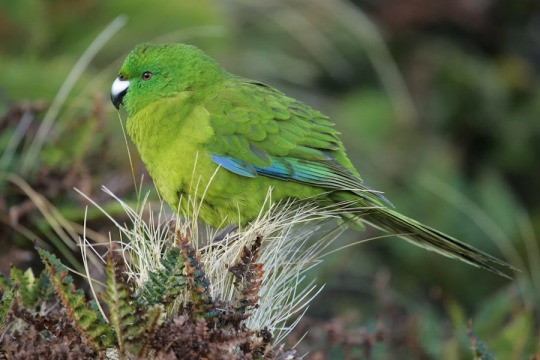
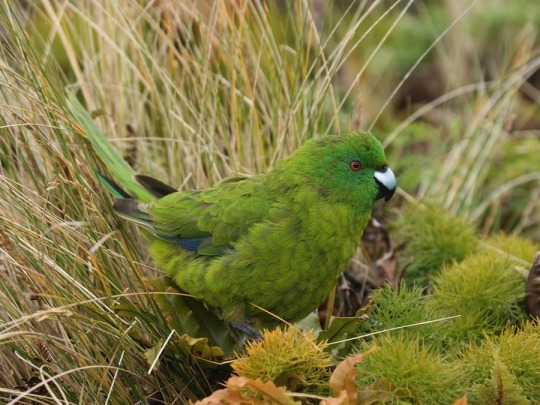
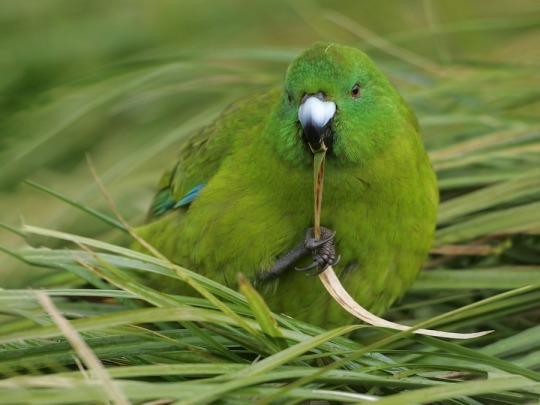
other lesser known parrot species i would love to see hyped up: Reischek's parakeet and Antipodes parakeet!! they’re hanging out down on the subantarctic islands and they are very cool
70 notes
·
View notes
Text
rough-hewn hands



Sofia was left feeling perplexed by Rafe’s hands. A Kook boy like him who’d never known a day of hard work in his life? She imagined his palms to be soft and pillowy and his fingers smooth and sleek.
Different to her hands. Roughened from carrying the heavy carts of stock for the bar; chapped from wiping down tables; coarsened from fixing her scrap metal car every other month.
No matter how much lotion she lathered her skin in, or how many manicures she booked– it was impossible to hide the marks of being a pogue.
So the first time Rafe touched her she expected his hands to be the same as him: pristine, polished and lined in velvet.
But as he cupped her face, drawing her into a kiss, her cheek bristled from the rough-hewn skin. It’s not like it wasn’t nice…she liked it. Especially when his hands trailed lower and lower, slipping beneath the flimsy material of her red bikini.
But she wondered what he was hiding. Rafe Cameron and hard worker were antipodes in her book. He made everything look effortless– all casual handshakes and airy smirks. But right now she didn’t want to think about any of that and let his callouses rub deliciously against her hot skin.
***
After they fucked, lying beside each other on the bed, she grabbed his wrist, examining his hands.
“Lookin’ for something there,” her teased, lifting his head up slightly to watch what she was doing. He had half a mind to yank his arm back, suddenly feeling like he was being judged. But Rafe decided to let her hold him, lapping up her reaction. She looked amused but curious: her big, shiny eyes drinking in his hand, her thumb rubbing circles into his palm.
Sofia was a funny girl, Rafe noticed.
She drifted through life with a sunny smile and an unaffectedness that he craved. He wasn’t deaf and he wasn’t blind. He heard the girls chatting shit as he meandered through the party with Sofia on his arm. He saw the chary looks being thrown at her when he led her upstairs.
But when he checked on Sofia, her bright glowy gaze and that big grin of hers remained intact.
She was thick skinned…like she had to be. Rafe was too. When half the island thought you were a raging psycho– hell when half your family did too– you learn to toughen up.
“You gonna tell me why you’re giving me a hand massage right now? Or is it just your way of saying thank you after–“
“Oh shush,” she let his hand drop, turning to face him in bed. “Your hands aren’t like what I thought they’d be.”
A slow, lazy smirk played across his lips. She was so strange. The handful of coke dazed hookups he’d had always ended with them jumping out of his bed, eager to escape him. Sofia continuing to touch him, even when they weren’t fucking, fascinated him.
“Oh yeah? My hands didn’t pass your examination then, Miss Sofia?”
She rolled her eyes, settling into the pillow.
“I thought they’d be soft.”
Rafe’s face betrayed his feelings. His brows furrowed, smile vanishing. She caught on quick.
“I’m not disappointed! I promise…it felt good.” Sofia gave him another one of those coy, coquettish smirks that made his stomach flutter. “It’s just that with hands like those you’d think you’d be some sort of mechanic or builder you know?”
Rafe considered her words. The fact she noticed enough to feel the difference in his palms. He’d never felt noticed before…at least not in any way that mattered (or in any way he accepted). And here she was marvelling at each callous on his finger and the texture of his touch. Here she was enthralled at his efforts, caressing the proof of his rough-hewn labour.
Rafe instinctively reached out for her, his hands going to drag her into his body.
After heaving the cross up the convey, the rope burn masticating his skin, and lugging the firewood to burn it…after beating up Singh’s men and digging nails into his pulpy flesh whenever he felt stressed…Rafe’s hands were a leathered mess.
“A mechanic or a builder? That’s funny because I’m both of those things actually.”
Sofia giggled, her soft head slotting perfectly into his embrace, ��oh yeah? Here I thought you were just living off of some trust fund.”
Rafe prickled with a bitter burst of insecurity. But he tried to keep up the levity. It was hard to get snappy at Sofia, when she was looking up at him so prettily, “hey– I worked for it okay? Wanna take another inspection of my hands huh?”
Now it was Sofia’s turn to consider him, her honeyed eyes darting across his visage, “hmn no need, you’re holding on to me pretty tightly. I can feel them just fine.”
Rafe teasingly squeezed at the soft flesh of her hips, “glad I made you feel good,” he mumbled, his touch never relenting.
He’d been afraid of hurting her. She was so small and so seemingly delicate. But Sofia luxuriating in his calloused hands, softening as he fervidly kneaded at her doughy skin, showed to him she wasn’t as helpless as he thought. There was a raggedness to her that made her fit right up against his serrated edges.
Sweet, sunny Sofia. Her hands were just as rough as his.
And Rafe liked that.



#it looks like the only thing I can seem to write rn are drabbles#this is an interpretation of their first night together in s3 ep 7#outer banks#rafe cameron#sofia obx#sofia outer banks#rafe x sofia#rafe and sofia#rafe cameron fanfiction#sofia outer banks fanfiction#rafe and sofia fanfiction#༊*·˚syren
47 notes
·
View notes
Text
U.S. President Donald Trump has imposed tariffs on every country in the world, but few could feel as betrayed as Australia. Greens leader Adam Bandt, who together with other minor parties and independents holds the balance of power in Parliament, was unequivocal in his response to Wednesday’s announcement.
“End AUKUS,” Bandt posted on X.
Though only levied at a “baseline” rate of 10 percent—the minimum imposed on all nations by the United States—Trump’s tariffs have upended a roughly 70-year-old formal alliance between the two nations as well as an even longer friendship.
The AUKUS agreement, a long-term deal for the purchase of U.S.- and U.K.-made submarines by Australia, has come under particular scrutiny. The Greens have opposed the trilateral security partnership since it was struck in 2021, while Australian Prime Minister Anthony Albanese, of the center-left Labor Party, and opposition leader Peter Dutton, of the center-right Liberal Party, have remained firm in a bipartisan stance supporting the deal.
Now, with only one month to go before national elections—and with polls showing a close race—Bandt’s position is rapidly entering the mainstream.
Australia’s reaction to Trump’s vast global tariffs is a case study in how they will reshape geopolitics. At the near-literal antipode of Washington, D.C., Trump is very much on the ballot—and Australia’s core security relationship hangs in the balance.
Independent Sen. Jacqui Lambie is the kind of politician whom journalists love to describe as a firebrand, known for her shaky grasp of sharia law and her unerring populist barometer. Under other circumstances, the far-right Lambie might be a Trump ally. In this timeline, she’s ready to give two fingers to Washington.
Speaking to the national broadcaster after Trump’s announcement, Lambie pointed indignantly to the ongoing presence of 2,500 U.S. Marines stationed in Australia’s northern city of Darwin since 2012. “You can tell them there’ll be no rotations after this one,” Lambie said. “They can get straight off home soil.”
How you detect the tectonic plates really moving is the fact that even the Rupert Murdoch-owned newspaper the Australian wants to shake things up.
“[W]e are not even remotely a bad trading partner with the US,” fulminated the paper’s chief international correspondent, Cameron Stewart, shortly after the announcement. The tariffs, Stewart wrote, were “further evidence, if any was needed, that Trump pays little or no heed to the notion of alliances, loyalty or friendship.”
Speaking of friends—Albanese had tried to directly appeal to the U.S. president to secure an exemption. On the eve of the announcement, Albanese posted on Instagram that he was dining with golf star Greg Norman, who had passed Trump’s number onto then-Prime Minister Malcolm Turnbull when Trump first won the presidency in 2016.
After Trump described Australians as a “wonderful people” in his April 2 speech announcing the tariffs yet ultimately denied them the exemption that Albanese sought, the prime minister conceded to reporters on Thursday that the tariffs were “not the act of a friend.”
Albanese chuckled as he noted that the Australian external territory of Norfolk Island, with a population of 2,188 people, had been hit with a tariff rate of 29 percent.
Trump’s team appears to have calculated the levies by dividing the trade deficit in goods by the country’s exports to the U.S., then halving the result. In instances where the result was low or the United States actually had a trade surplus, a 10 percent minimum was imposed. The administration also appears to have used an eccentric list of countries and territories that includes uninhabited islands and U.S. bases.
While the United States runs a trade surplus with Australia as a whole, Norfolk happens to export considerably more than it imports. Thursday’s interview wasn’t the first time the prime minister has deployed a wry, dejected humor in dealings with Trump, but he’s now under pressure to adopt a more aggressive posture.
Writing in the Sydney Morning Herald, former Liberal Party staffer Niki Savva urged the leaders of both major parties to “go in hard against him.” She added, “How will Trump punish us? By scrapping AUKUS? Please. Make our day.”
Dutton, the Liberal Party leader, is in an even trickier position than Albanese. The former police officer-turned-conservative politician likely thought that he could ride a trans-Pacific MAGA wave to Australia’s top job.
Savva has called the strategy “aping Trump,” and it worked until it didn’t. Last year, Albanese’s numbers were dire, and Dutton led in polls with an unabashedly nationalist campaign message. As recently as two weeks ago, the Liberal leader was floating the idea of holding a referendum on the possibility of deporting dual citizens convicted of serious crimes, and he’s sought to ignite a culture war by accusing academics and teachers of pushing “woke agendas.” Neither are issues Australians say they’re most concerned about. (That list is topped by the cost-of-living crisis.) Lately, though, Dutton’s Trump-style politics have come to feel toxic, not just irrelevant, to many voters.
In a poll released on March 4 by the Australia Institute, more Australians cited Trump as a threat to world peace than Russian President Vladimir Putin or Chinese President Xi Jinping, and more respondents preferred a more independent foreign policy than a closer alliance with the United States.
A more recent survey found that Australians have scaled up their concerns about Trump since he took office, with 60 percent saying his election has been bad for Australia, up from 40 percent in November 2024.
That swing away from Trump surely accounts for Dutton’s waning electoral fortunes. There’s a reason that one of the more successful memes of this election cycle, created by union groups, is Dutton’s face superimposed on Trump’s. As Labor’s share of the prospective primary vote has climbed steadily over the past few weeks, the party is projected to hold on to government—mirroring a similar turnaround in Canada, which is also due to hold elections soon. There, new Prime Minister Mark Carney is tipped to beat his Trump-loving conservative opponent in an election defined by fury toward the United States.
Australians’ aversion to the U.S. president is partly a matter of style; its voters have historically recoiled from polarizing figures. The country’s system of compulsory and preferential voting, where the second choice of many can beat the first choice of some, breeds cautious leaders whose electoral success comes from repelling the least amount of people.
More significantly, there’s a visceral sense of abandonment by Australia’s big and powerful friend.
“In many cases, the friend is worse than the foe,” Trump opined in his April 2 speech, and on this point, Australians would be inclined to agree with him. Aside from running afoul of a free trade agreement that has been in place since 2005, a common talking point against the imposition of U.S. tariffs has been that the two countries have fought side by side in every major conflict since the First World War.
A feeling of camaraderie with the United States cultivated over decades has thus far allowed the AUKUS submarine deal to sail under the radar. Case in point: When the Albanese government sent $500 million to Washington as part of the deal in February, the payment passed largely without comment. If it felt a little like protection money, then at least the protection was coming from a fail-safe ally.
Sure, it was jarring when Trump appeared not to know about AUKUS when he was asked about it at an Oval Office presser in late February. Maybe he misunderstood and thought that the question was about “August”? And U.S. Defense Secretary Pete Hegseth had made encouraging noises earlier that month, such as when he confirmed that “the president is very aware” of the partnership.
February, though, is ancient history. Previously, the only former prime minister willing to break ranks with the Australian national security establishment and speak out against the agreement—estimated to cost Australia about $3 billion over just its first four years—was former Labor Prime Minister Paul Keating, who left office in 1996. Keating has long advocated for the nation to break with the United States to forge closer ties in Asia, especially with China, which itself is fiercely opposed to the AUKUS deal.
But two weeks ago, Turnbull—the former Liberal Party prime minister—branded AUKUS a “terrible deal” for Australia.
“The most likely outcome of the AUKUS pillar one is that we will end up with no submarines of our own,” Turnbull said.
It is significant that ideological foes now agree that AUKUS is a waste of money. And if Albanese does win the May election and holds onto power, he will need to address this groundswell of antagonism toward the United States—and AUKUS—head-on.
Trump’s tariffs appear to be reviving the fortunes of left-leaning incumbents in countries that were, until recently, aligned with the United States. The geopolitical aftershocks of his presidency will last well beyond their tenures.
11 notes
·
View notes
Text

Antipodes Parakeet (Cyanoramphus unicolor), family Psittaculidae, endemic to the Antipodes Islands of New Zealand
photograph by Kimberley Collins
184 notes
·
View notes
Text

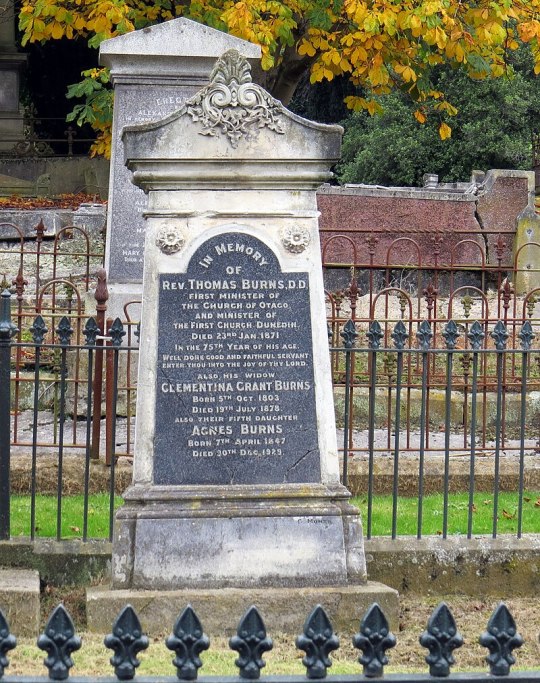
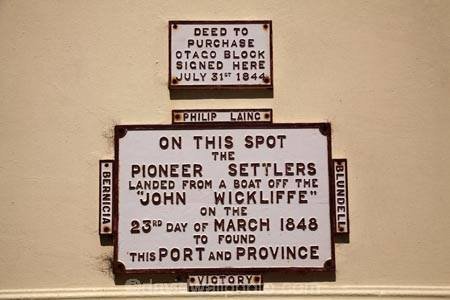

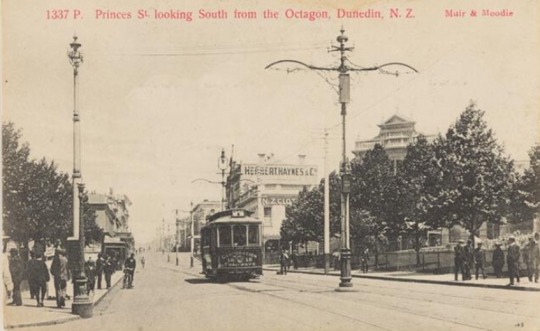

On March 23rd 1848, the Free Church of Scotland settlement at New Edinburgh, New Zealand was founded, it is known today as Dunedin.
It was the poet’s uncle, Rev Thomas Burns, who was among the first settlers to arrive in Dunedin, the Gaelic for Edinburgh, having been appointed by the Free Church to lead a new Presbyterian settlement in the South Pacific
One passenger on the John Wickliffe, the fist ship to carry Scottish settlers to the South Island of New Zealand, wrote in his diary: “All seemed pleased and called it a goodly land – Port Chalmers and around is truly beautiful – rich in scenery – its slopes and shores are fertile, and wooded to the water’s edge.”
Every year in Dunedin, the arrival of these first settlers from Scotland is marked by Otago Anniversary Day, the public holiday falling this year on Monday just gone.
A second boat sent by the Otago Association, founded by the Free Church to broker land sales in South Island for its followers, arrived on April 15th with more than 200 people on board. They had spent 114 days at sea since leaving Greenock.
On board were people such as Adam James, 25, a boatbuilder; James Blackie, 21, a school teacher, James Brown, 23, a calico printer and Mary Pollok, 19, a servant.
By the end of the 1850s, around 12,000 Scots had joined them in this new flourishing city, many from the industrial lowlands.
Artisans, small traders and industrial workers were to make up a third of all Scottish migrants to New Zealand with almost 70 % of this group coming from the Edinburgh and Glasgow area.
A number left Paisley in the early 1840s when its weaving industry was in trouble with the south part of the city to become known as “Little Paisley”.
It was George Rennie MP, born in East Lothian, who first proposed a Scottish settlement in 1842 when he declared “We shall found a New Edinburgh at the Antipodes that shall one day rival the old.”
Chief operators of the church-led plan included William Cargill, a former British Army captain who commanded the John Wickliffe and became the first superintendent of Otago.
Edinburgh solicitor John McGlashan, became the Otago scheme’s chief organiser and promoter who commandeered residents for the new colony and organised ships.
His office at 27 South Hanover Street was open 10 hours a day as people turned up at his door to organise their passage.
Conditions were tough on arrival with relentless hard graft required to transform mud and bush into even the most primitive settlement. A number of wattle and daub cottages were constructed with the place dubbed “Mud-edin” given the coarse conditions.
Still, the Free Church, in an 1853 publication, had the highest praise of the new Scots residents who were “mostly of the labouring classes who had the aim of becoming landowners.”
The author noted the “very high character” of the residents and the “very serious regard to their religious duties.”
The extreme piousness of the settlement is made startling clear.
“The silent religious aspect of our Sabbath, the solemn seriousness, the death-like stillness, and the reverential attention in the house of God strike every stranger and are unequalled by anything of my experience,” the account added.
Despite the growth of Dunedin, the Otago Association folded in 1852 after repeatedly failing to meet is sales targets with its assets and liabilities taken over by the British Government.
McGlashan took a ship to join the settlers in Otago. He and Captain Cargill were to become major players in the governance of the region with the moral authority delivered by Rev Burns, a foundation chancellor of the University of Otago who some disliked for his heavy handed puritanical ways. Anglicans were referred to as “Little Enemy” by the Ayrshire-born minister.
As Tom Devine noted in To the Ends of the Earth, one anonymous correspondent to the New Zealand Otago Times, writing under the pseudonym a Staunch Englishman, described the Scots settlers as a “mean, close, bigoted, porridge-eating” lot who were prone to “minding the sixpences.”
The legacy of those first settlers is, however, ample. Otago Boys’ High School was set up in 1864, the University of Otago in 1869 and Otago Girls’ High School, one of the first state-run schools of its type in the world, opened in 1871.
John McGlashan College, Dunedin’s Presbyterian boys’ school, was founded in 1918 from a bequest to the Church by McGlashan’s daughters.
The stiff presbyterian tone of Dunedin is also said to have spurred a “creative rebellion” with works by Dunedin poet James K Baxter considered among the country’s finest.
Today, whisky, pipe band sand the city’s own Haggis Ceremony continue to mark the impact of those first Scottish settlers who arrived.
Shops on the main street stock Dunedin tartan, tweeds and Scottie dog trinkets and signposts point to places such as Leith Valley, Corstorphine, Musselburgh Calton Hill, and of course Princes Street.
Bars pride themselves on their selections of fine malts, churches have an air of architectural familiarity and the municipal chambers looks as if it could have been transported from any Scottish town. A statue of Robbie Burns stands in the main plaza.
Mark Twain, after visiting Dunedin in 1895, wrote of them: “The people are Scotch. They stopped here on their way from home to heaven thinking they had arrived.”
For millions of Scots scattered worldwide, Scotland remains the homeland. It's the place they look towards for inspiration, with affection, or with an air ticket to renew that sense of Scottish identity. The internet has made the world a lot smaller for us all, which is why many enjoy the posts here, it gives them a wee sense of belonging, even if it less than a dram of Scottish blood you have flowing through you.
10 notes
·
View notes
Text
🗺️Weekly Tag Wednesday🗺️
Thanks for the tags, @spoonfulstar @deedala @kiennilove @energievie
1) Your nickname: Deeners
2) Where do you live currently and what is it known for geographically? In a town in Virginia, US, that is marked by two small mountains. You can see them from all up and down the valley. The mountains are named after two Scottish lasses who died of the plague in the 1600s.
3) What’s the weirdest or most unusual geography-related trivia you know? Alaska is not only the northernmost state, it's also the furthest east AND west.
4) How many countries can you name off the top of your head for your own continent? I can name the big three. Maybe like five of the Caribbean islands. My son would be so ashamed. He can name every country.
5) Where is the antipode ( https://www.geodatos.net/en/antipodes ) of your birthplace? What would it be like if you were randomly dropped there? In the middle of the Indian Ocean. Closest city is Gnarabup.
6) Fully optional but I made a custom map ( https://www.geoguessr.com/maps/648921db322ebab0b66648fc ) on geoguessr. If you play it, drop your score below: I wasn't able to play without upgrading, so no quiz for me.
Tagging ... @mybrainismelted @blue-disco-lights @gallawitchxx @crossmydna @silvanshadow
10 notes
·
View notes
Text
📍Weekly Tag Wednesday 🗺️
Ooh it's a geography wednesday! Easily my worst subject so here 👏🏻 we👏🏻 go👏🏻 Thanks for the tags @spoonfulstar @runninonemptyy @deedala @kiennilove @energievie @sgtmickeyslaughter
Your nickname: Jess
Where do you live currently and what is it known for geographically?: Toronto. Ummmmm.. for being super corporate and expensive. Oh and the CN Tower I guess? Blue Jays - the only Canadian MLB baseball team. Oh and MBA Basketball team? Someone stop me....
What’s the weirdest or most unusual geography-related trivia you know? Hmmmm Canada is a really big country. It's the same time for me to fly to Ireland as it is to fly to British Columbia (where I'm originally from on the west coast). Not every part of Canada gets a lot of snow. Or has french speaking people.
How many countries can you name off the top of your head for your own continent? North America is easy but I'm so bad at geography it's not guaranteed I'd get it right. Don't even ask about South America.
Where is the antipode of your birthplace? What would it be like if you were randomly dropped there? Port-aux-Français according to google. Which appears to be a tiny island in the middle of the Indian ocean. So yeah sure, I'm down.
Fully optional but I made a custom map on geoguessr. If you play it, drop your score below :D it's trying to make me pay and I won't bow to this evil god! Also we already know from past Geogssr experience Id do real bad.
Please come do badly with me! Everyone is always welcome come play. Tagging:
@blue-disco-lights @runawaybrainsc @kowhaifairy @gallavich-annise @gallapiech
@spookygingerr @michellemisfit @femboymilkovich @lazystargazy @heymacy
@mickeysgaymom @romidoes @fireballazalea @jessij1997 @heymrspatel
@gallawitchxx @callivich @transmurderbug @ian-galagher @creepkinginc
@c-nord @suzy-queued @rereadanon @guinguin1984 @doshiart @geonbaeeeesblog
@sam-loves-seb @samantitheos @ms-moonlight-inn @darlingian @sillygoofygoobersstuff
@look-i-love-u @such-a-barbarian
#weekly tag wednesday#tag you're it#what's with today today?#weird vibes#someone light a candle and walk backwards#gallavich community#enrichment for our enclosure
18 notes
·
View notes
Text
weekly tag wednesday
Thanks for the @weekly-tag-wednesday tags @spoonfulstar and @deedala!
Your nickname: Krissi (incidentally, already a nickname 😉)
Where do you live currently and what is it known for geographically?: Southern California, and 🏖️🌊
What’s the weirdest or most unusual geography-related trivia you know? I honestly cannot think of anything 😬
How many countries can you name off the top of your head for your own continent? I think I could maaayybe name most of them (besides the obvious big three) if pressed, but I’d have to really think about Central America and the Caribbean. So off the top of my head, right at this moment, I can think of maybe a handful 😂
Where is the antipode of your birthplace? What would it be like if you were randomly dropped there? Saint-Philippe, Réunion, Reunion. I don’t know much about it other than that it’s on a tropical island and looks beautiful!
Fully optional but I made a custom map on geoguessr. If you play it, drop your score below : My score went away and it won’t let me do it again! But I think I got 2/3 countries right…
Tagging…
@atthedugouts @blue-disco-lights @bawlbrayker @casey-ackkat @callivich @casey-ackkat @deathclassic @echotrees @energievie @fireballazalea @gallavich-annise @ian-galagher @jrooc @jessij1997 @kiennilove @kowhaifairy @lazystargazy @look-i-love-u @nozenfordaddy @nymacron @pillowbee @rororowyourboat18 @rayrayor @runawaybrainsc @stocious @solitarycreaturesthey @thepupperino
11 notes
·
View notes
Text
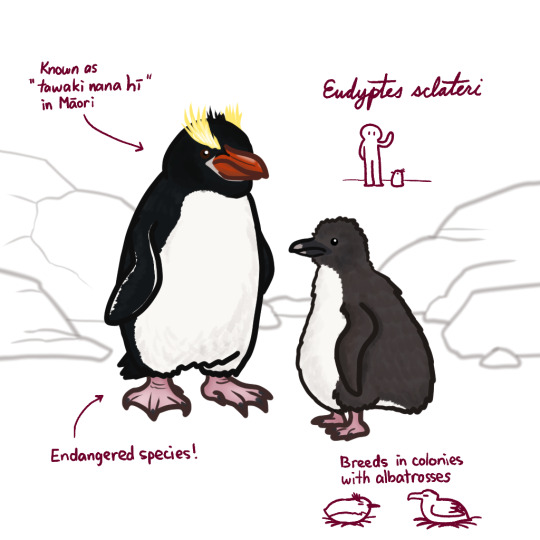
Little is known about the erect-crested penguin, because research is hampered by the remoteness of the two islands (Bounty and Antipodes Islands) they breed on and the difficulty of getting permits to visit said islands.
#march of the penguins#penguin#bird#erect crested penguin#tawaki nana hi#endangered species#education#art
20 notes
·
View notes
Text
Everyday scenes on Antipodes island.
2 notes
·
View notes
Text
why are all these fucking european ships crashing on an island in the south pacific, but no pacific islanders ever crash there. how did jacob and the smoke monsters bio-mom even get there in the year 0 (?? THE YEAR 0 WASNT EVEN REAL, it goes 1 bc, 1 ad) from the roman empire. what were they doing literally half way across the world when they did all their conquering locally (if we didnt see it was a shipwreck i wouldve assumed it was the antipode in tunisia or something) is the island a white people magnet? im serious. i can only think of one non-european/anglo vessel that crashed on the island, eko's brother's plane.
9 notes
·
View notes
Text
According to Wikipedia, the small volcanic island of Rapa Iti is the nearest island to the antipode of Jerusalem.
I don't know what to do with this fact, but it feels like it should somehow be significant.
27 notes
·
View notes
Text
Antipode | (LOZ: SS X READER)
Chapter 1 teaser.
There will be more chapters coming on my wattpad and quotev accounts!!
✪✪✪
𝐓𝐡𝐞 𝐛𝐢𝐠 𝐛𝐞𝐥𝐥 𝐫𝐚𝐧𝐠 𝐭𝐡𝐫𝐨𝐮𝐠𝐡𝐨𝐮𝐭 𝐭𝐡𝐞 𝐜𝐨𝐧𝐧𝐞𝐜𝐭𝐢𝐧𝐠 𝐢𝐬𝐥𝐚𝐧𝐝𝐬. The academy was out for the day. They used to wait at the stairs for their associate but not-so-recent developments sheltered them from doing so. Fledge ran down the stairs. The heel of his boot didn't grip the very edge of the step sending him sliding down the staircase on his rear. The redness in his cheeks spread to the tips of his pointed ears. He had tutoring today at the docks.
His first flight.
Loftwings were scarcely bred and he was determined to get his certification so he could be a rider. He could ride far, far away from the bullies. He knew he lacked in every corner of knightly attributes. That's why (y/n) was assigned to help him.
They were head of the nightshift guard, a tedious position to hold. Most riders only went out during the daylight hour. It took immense trust between rider and loftwing to ride together into dark nothingness. (y/n)'s loftwing was born blind, they 'gave a dud to a dud' as their tutor would say, riding into the night was no different to daylight. Some may call it a feat and an upper-hand, but only because (y/n) thought of the feat first. And everyone didn't like (y/n). It was a matter of maturity versus brilliance.
No one had seen Fledge run this fast. Today, he'd prove where he landed on the rung of the ladder. He saw (y/n) in the distance, they stood with their chest puffed out and their eyes searching the skies ahead. Their loftwing was on one foot with its head twisted tucked into it's wing, fast asleep. He wondered if he was late, but it wasn't possible.
They heard the shuffling on the grass behind them and loosened the security on themselves. They knew it was Fledge. It almost impressed them how fast he was running. His stamina couldn't withstand much.
"𝖥𝗅𝖾𝖽𝗀𝖾. 𝖸𝗈𝗎'𝗋𝖾 𝖾𝖺𝗋𝗅𝗒." they quietly acknowledged.
He gulped trying to coat his throat with any saliva he had and ducked his head down for more air. He held up a numb finger telling them to wait.
"𝖲𝗉𝖾𝗇𝖽 𝗍𝗁𝖾 𝗋𝖾𝗌𝗍 𝗈𝖿 𝗍𝗁𝖾 𝗍𝗂𝗆𝖾 𝖼𝖺𝗍𝖼𝗁𝗂𝗇𝗀 𝗒𝗈𝗎𝗋 𝖻𝗋𝖾𝖺𝗍𝗁. 𝖸𝗈𝗎'𝗅𝗅 𝗇𝖾𝖾𝖽 𝗂𝗍 𝖿𝗈𝗋 𝗒𝗈𝗎𝗋 𝖿𝗂𝗋𝗌𝗍 𝖿𝗅𝗂𝗀𝗁𝗍." They shifted onto their hip and looked out on Skyloft. They could see the other students mingling across the island. Each one was unmistakably identifiable.
✪✪✪
𝐌𝐚𝐬𝐭𝐞𝐫 𝐇𝐨𝐫𝐰𝐞𝐥𝐥 𝐬𝐭𝐨𝐨𝐝 𝐨𝐧 𝐭𝐨𝐩 𝐨𝐟 𝐭𝐡𝐞 𝐫𝐨𝐨𝐟 𝐰𝐢𝐭𝐡 𝐡𝐢𝐬 𝐜𝐚𝐭 '𝐌𝐢𝐚'. He'd asked you to come by sometime to talk about your future. He was the school advisor but you'd graduated about a year and a half ago. Last time you were called into an office at the academy was after graduation. Gaepora presented you with a rapier, that now decorated your hip at all times. It was your mother's, like you cared.
'I did all of this work for a lousy sword from a dead broad? I knew her in fewer moments than vast and long hours I think about her. Wonderful reminder. Anyway I have no more obligations here, so long gae-ass.'
Gaepora did not appreciate your kitschy attitude. But it was the first time he'd felt like he'd seen your true colors. You were quiet and accommodating. Nothing with connotative emotion. The teachers had nothing notable to say about you. You were cold and stern 'underneath it all'.
You didn't act that way underneath a mask like Gaepora pointed out to you, it just never needed to manifest. Your resentment for him grew everyday you were at that academy. You would preach to your journal about his flawed character and his daughter. It was not hard to admit the jealously of it all. No one stepped up and took you in. You were alone. His one sentiment of that sword didn't fix the years of haunting you felt.
Fledge caught his breath long ago, and now stared intensely at you. There was an emotion on your face that he couldn't quite pin. He noticed your often hidden rounded ears, your towering height, and your features. You were different, you knew that. But no one could tell you why. Fledge never treated you differently, he was a star pupil out of all the kids you tutored.
"𝘞𝘢𝘪𝘵." his brows furrowed "𝖧𝗈𝗐 𝖺𝗆 𝖨 𝗀𝗈𝗇𝗇𝖺 𝗋𝗂𝖽𝖾 𝗈𝗇 𝗍𝗁𝖾 𝖻𝗂𝗋𝖽 𝗐𝗂𝗍𝗁 𝗒𝗈𝗎 𝗂𝖿 𝗒𝗈𝗎𝗋 𝗅𝗈𝖿𝗍𝗐𝗂𝗇𝗀 𝖼𝖺𝗇 𝖻𝖺𝗋𝖾𝗅𝗒 𝗍𝖺𝗄𝖾 𝗒𝗈𝗎𝗋 𝗐𝖾𝗂𝗀𝗁𝗍?"
You gave Fledge a hundred yard stare. You were taller than most. It almost kept you from joining the academy. Groose came close to you in height and his bird barely kept up some days. Your height affected your weight by a lot. Hylians were, of course, much shorter than humans.
"𝖨𝖿 𝖫𝗂𝗇𝗄'𝗌 𝖿𝖺𝗍𝖺𝗌𝗌 𝖼𝖺𝗇 𝗋𝗂𝖽𝖾, 𝗌𝗈 𝖼𝖺𝗇 𝖨."
Link was stocky and short and he was quite the glutton. It was one of his 'adorable' traits, as Zelda yapped in your ear at your tutoring sessions with her. She was your least favorite and it was partly her father's fault. The rest was all her.
"𝖨-𝗂 𝗀𝗎𝖾𝗌𝗌 𝗌𝗈." Fledge stuttered. He didn't hear you curse much. You probably weren't supposed to but you could be unruly at times.
"𝖦𝖾𝗍 𝗈𝗇 𝗍𝗁𝖾 𝖻𝗂𝗋𝖽. 𝖸𝗈𝗎'𝗏𝖾 𝖾𝖺𝗋𝗇𝖾𝖽 𝗍𝗁𝖾 𝗋𝗂𝖽𝖾." you gently patted your loftwing's head and woke it up. Its large yellow eye opened first, then its head untucked, then it stretched and purred.
"𝘏-𝘩𝘰𝘸 𝘥𝘰 𝘐...?"
You got on, hopping over its back easily with your longer legs. Fledge looked nervously and approached slowly.
"𝖭𝗂𝖼𝖾 𝖻𝗂𝗋𝖽𝗒-" your bird shook out its feather which startled him "𝖸𝗈𝗎 𝗌𝖺𝗂𝖽 𝖨 𝗁𝖺𝗏𝖾 𝗍𝗈 𝖺𝗉𝗉𝗋𝗈𝖺𝖼𝗁 𝗌𝗅𝗈𝗐𝗅𝗒 𝖺𝗇𝖽- 𝖺𝗇𝖽-"
"𝖣𝗈𝖾𝗌𝗇'𝗍 𝖺𝗉𝗉𝗅𝗒 𝗐𝗁𝖾𝗇 𝗂𝗍'𝗌 𝗍𝖺𝗆𝖾𝖽. 𝖮𝗇𝗅𝗒 𝗐𝗁𝖾𝗇 𝗂𝗍'𝗌 𝗌𝖼𝖺𝗋𝖾𝖽 𝗈𝗋 𝗎𝗇𝗍𝖺𝗆𝖾𝖽." you sighed. You hopped off and picked him up by the waist and placed him on the loftwings back.
"𝖶𝗈𝖠𝖧."
"𝖸𝗈𝗎'𝗋𝖾 𝖿𝗂𝗇𝖾. 𝖱𝖾𝗆𝖾𝗆𝖻𝖾𝗋 𝗍𝗋𝖺𝗂𝗇𝗂𝗇𝗀?"
"𝖸𝖾𝗌. 𝖨 𝗇𝖾𝖾𝖽 𝗍𝗈 𝗉𝗎𝗍 𝗆𝗒 𝗁𝖺𝗇𝖽𝗌-"
You clapped twice and your loftwing lifted its wings and took off upwards. You heard him screaming. You shielded the sun from your eyes and watched him go. Your loftwing took off around the island and would screech every now and then when Fledge pulled too hard. He couldn't help the tears forming in his waterline and screamed,
"𝘚𝘛𝘖𝘗! 𝘚𝘛𝘖𝘗! 𝘚𝘛𝘖𝘗! 𝘚𝘛𝘖𝘗! 𝘚𝘛𝘖𝘗!"
"𝖨𝗌 𝗍𝗁𝖺𝗍 𝖥𝗅𝖾𝖽𝗀𝖾?" Link approached behind you, looking at the (color) bird soar as well. Some of the other school kids gathered around you two and murmured.
"𝖸𝖾𝗉."
"𝖣𝗈𝗇'𝗍 𝗒𝗈𝗎 𝗍𝗁𝗂𝗇𝗄 𝗍𝗁𝖺𝗍'𝗌 𝖽𝖺𝗇𝗀𝖾𝗋𝗈𝗎𝗌? 𝖧𝖾'𝗌 𝗈𝖻𝗏𝗂𝗈𝗎𝗌𝗅𝗒 𝗇𝗈𝗍 𝖼𝗈𝗆𝖿𝗈𝗋𝗍𝖺𝖻𝗅𝖾."
"𝖡𝗈𝗈𝗁𝗈𝗈. 𝖶𝗂𝗍𝗁 𝗈𝗋 𝗐𝗂𝗍𝗁𝗈𝗎𝗍 𝗆𝖾 𝗁𝖾'𝖽 𝖻𝖾 𝗌𝖼𝖺𝗋𝖾𝖽 𝗈𝗎𝗍 𝗈𝖿 𝗁𝗂𝗌 𝗀𝗈𝖽𝖽𝖺𝗆𝗇𝖾𝖽 𝗆𝗂𝗇𝖽."
"𝐀𝐀𝐀𝐀𝐀𝐀𝐀𝐀𝐀𝐇𝐇𝐇𝐇𝐇𝐇𝐇𝐇𝐇𝐇"
"𝖧𝖾 𝖼𝗈𝗎𝗅𝖽 𝖿𝖺𝗂𝗇𝗍 𝖿𝗋𝗈𝗆 𝗍𝗋𝖺𝗎𝗆𝖺, 𝗒𝖺' 𝗄𝗇𝗈𝗐." Zelda pointed out in worry. She took off to get her loftwing. You let Fledge, of all people, ride alone on his first flight with no regard for his safety. She knew you were tough but was not happy you didn't care if other people weren't. Like your students.
You whistled and your bird circled back from the rocky ropes course. It was graceful in the air. You watched as it slowed above you with its wings flapping backwards. The talons landed and gripped the grass. Fledge was clutching the bird and squeezing it with his knees. Your loftwing complained and tried bucking him off but Fledge's grip was too strong.
"𝖶𝗈𝖺𝗁 𝗁𝗈𝗇𝖾𝗒-" you got in front of the bird and stroked its neck. It still complained but stopped thrashing. Groose pushed you out of the way to see Fledge.
"𝖶𝗈𝖺𝗁. 𝖭𝗂𝖼𝖾 𝗋𝗂𝖽𝖾, 𝗂𝗌 𝗍𝗁𝖺𝗍 𝖺 𝗐𝖾𝗍 𝗌𝗉𝗈𝗍 𝗈𝗇 𝗒𝗈𝗎𝗋 𝗉𝖺𝗇𝗍𝗌, 𝖽𝗎𝖽𝖾?" his lackeys laughed. You elbowed Groose in the stomach and he keeled over as well. Groose wheezed and his friends came to help him up. Your hands touched Fledge's in an attempt to get him to stop gripping the feathers. Fledge's eyes were wide with shock.
"𝖳𝗒𝗉𝖾 𝗌𝗈𝗆𝖾𝗍𝗁𝗂𝗇𝗀 𝗍𝗈 𝗌𝗍𝖺𝗋𝗍"
Fledge's weakly tossed his legs over to one side and flopped to the ground. He gripped the dust instead.
"𝖲𝗁𝗈𝗐'𝗌 𝗈𝗏𝖾𝗋. 𝖦𝗈 𝗁𝗈𝗆𝖾." you turned to the flock of students and shoo'ed them away. Not before swatting Groose on the back of his shoulder.
Fledge was very still as he was kneeled over. He burst into tears and wailed loudly.
"𝘐-𝘪-𝘪'𝘮 𝘴𝘰𝘳𝘳𝘺-𝘩𝘦-𝘩𝘦-𝘩𝘦𝘦!" he gasped in between cries. He cried so hard he started coughing violently. You patted him on the back and rubbed in circles to soothe him. Perhaps, you were too harsh, you think. He was already bullied enough, you were supposed to help him. Make him feel confident. Hard lessons didn't help him in particular.
"𝘕𝘰- 𝘯𝘰, 𝘍𝘭𝘦𝘥𝘨𝘦. 𝘐'𝘮 𝘴𝘰𝘳𝘳-" he vomited all over the dirt patch. You sighed and jogged over to the Bazaar. His parents would need to be contacted regardless. You lifted the curtains and twisted around to the Potions and Infusions stall. Luv and Bertie were hustling away, as usual. Luv clasped her hands when she saw you and her mauve lips stretched wide.
"𝖮𝗁-! (𝗒/𝗇)! 𝖧𝗈𝗐 𝗐𝖺𝗌 𝖥𝗅𝖾𝖽𝗀𝖾'𝗌 𝖿𝗂𝗋𝗌𝗍 𝖿𝗅𝗂𝗀𝗁𝗍? 𝖶𝖾 𝖼𝗈𝗎𝗅𝖽 𝗁𝖾𝖺𝗋 𝗁𝗂𝗌 𝗌𝖼𝗋𝖾𝖺𝗆𝗂𝗇𝗀, 𝖺𝗌 𝗐𝖾 𝖾𝗑𝗉𝖾𝖼𝗍𝖾𝖽." Yet they didn't care to come and watch him soar. Luv rubbed her hands nervously and with expectation that you'd taken care of him. You were ashamed to have to get his parents, because no one was to blame but you. There wasn't a way you could calm him down without cold water or taking him to the academy nurse. You didn't want to make him feel worse so grabbing his parents was the latter.
"𝖧𝖾'𝗌 𝗌𝖺𝖿𝖾, 𝖻𝗎𝗍, 𝗎𝗁, 𝖨 𝗇𝖾𝖾𝖽 𝗒𝗈𝗎 𝗍𝗈 𝖼𝗈𝗆𝖾 𝗀𝖾𝗍 𝗁𝗂𝗆." you avoided eye contact with the couple. Even the baby's crying hushed a bit over the numb feeling they both got.
"𝖨𝗌 𝗁𝖾 𝗈𝗄𝖺𝗒?"
"𝖧𝖾'𝗌 𝗎𝗎𝗎𝗁𝗁𝗁, 𝖺𝗅𝗂𝗏𝖾. 𝖡𝖺𝗋𝖾𝗅𝗒 𝗆𝖺𝗇𝖺𝗀𝗂𝗇𝗀. 𝖠𝗇𝖽 𝗅𝗂𝗄𝖾, 𝗐𝖾 𝗌𝗁𝗈𝗎𝗅𝖽 𝗀𝖾𝗍 𝗈𝗏𝖾𝗋 𝗍𝗁𝖾𝗋𝖾. 𝖫𝗂𝗄𝖾, 𝖠𝖲𝖠𝖯." you gestured to hurry up. They gave each other a look and dropped their duties promptly.
They rushed out to the dock where he was hunched over dry heaving. You followed after quickly and kept your head down.
“𝗈𝗁! 𝖥𝗅𝖾𝖽𝗀𝖾!” Just seeing her older son on the ground knocked the air out of her. Her husband crouched on the ground and started rubbing his back to get him to calm down. Luv whipped around to you and started stomping in your direction a few feet away.
"𝖣𝗂𝖽 𝗒𝗈𝗎 𝖽𝗈 𝗍𝗁𝗂𝗌??"
"𝖶𝖾𝗅𝗅. 𝖨 𝖽𝗂𝖽 𝗇𝗈𝗍 𝗁𝖾𝗅𝗉 𝗍𝗁𝖾 𝗌𝗂𝗍𝗎𝖺𝗍𝗂𝗈𝗇. 𝖲𝗈, 𝗒𝖾𝗌. 𝖨 𝗍𝖺𝗄𝖾 𝗋𝖾𝗌𝗉𝗈𝗇𝗌𝗂𝖻𝗂𝗅𝗂𝗍𝗒, 𝖬𝗋𝗌. 𝖥𝗅𝖾𝖽𝗀𝖾." you briefly made eye contact.
”𝘠𝘰𝘶!” She slammed her fist into your sternum “𝘉𝘪𝘨!” Thud! “𝘉𝘶𝘭𝘭𝘺!” Thud! “𝖶𝗁𝖺𝗍 𝖽𝗂𝖽 𝗒𝗈𝗎 𝖽𝗈 𝗍𝗈 𝗆𝗒 𝗌𝗈𝗇?!” Thudthudthudthudthudthud. Her fists rapped into you like a punching bag. You stood firmly with your arms crossed. It was like getting hit by twig. Her arms were much frailer, that’s why she had her husband stir the big potion pots. You wouldn’t want to take a hit from Bertie.
”𝘔-𝘮𝘰𝘮𝘮𝘢!” Fledge gasped for air and his mom ran to him. Zelda watched from a distant with her own bird. Seems you'd taken care of your own problem.
“𝖶𝗁𝖺𝗍 𝖽𝗈 𝗒𝗈𝗎 𝗇𝖾𝖾𝖽 𝗁𝗈𝗇𝖾𝗒-𝖻𝗈𝗈-𝖻𝗈𝗈?!”
The academy would be hearing about this. Your bird stocked over to you and nipped your neck. You stroked its beak and sighed.
You stood by for a while to help. Bertie had to get back to the stall so nothing was stolen or over boiled. You stayed with Luv to help him walk home. His legs kept giving out and you scooped him up and carried him the whole way. He was light and perhaps your bird got too happy about a light rider. It could maneuver tighter turns and fly faster.
Luv opened the round door to her home and you ducked into it. She was two steps ahead of you, opening doors, pulling the sheets back on his old bed from home. You laid him out gently.
Usually he stayed in the academy bunks but today was undeniably different. Fledge was quiet and looked tired, unlike an hour ago when he was excited for his first ever flight. If he chose to continue tutoring with you, if you weren’t fired, getting him to be a confident flier would be triple the work.
Luv sighed. She looked like she wanted to say something but just shook her head. You nodded curtly and ducked back out into the wide open.
-
𝐓𝐡𝐞 𝐤𝐧𝐢𝐠𝐡𝐭 𝐚𝐜𝐚𝐝𝐞𝐦𝐲 𝐡𝐞𝐚𝐫𝐝 𝐨𝐟 𝐭𝐡𝐞 𝐢𝐧𝐜𝐢𝐝𝐞𝐧𝐭. You reported it, his parents did, Zelda and a few of the other kids who witnessed it, but Fledge himself never fessed up to the tragedy. Owlan and Horwell waited in Gaepora’s office with you until he arrived. It was quiet. Horribly so. When Gaepora entered he had an unreadable look on his face. He stood by his desk and sighed, trying to find the words.
"(𝗒/𝗇). 𝖣𝗈 𝗒𝗈𝗎 𝗎𝗇𝖽𝖾𝗋𝗌𝗍𝖺𝗇𝖽 𝗐𝗁𝗒 𝗐𝖾 𝖼𝖺𝗇'𝗍 𝗅𝖾𝗍 𝗍𝗁𝖾𝗌𝖾 𝗍𝗁𝗂𝗇𝗀𝗌 𝗁𝖺𝗉𝗉𝖾𝗇?"
"𝖨𝗍'𝗌 𝖽𝖺𝗇𝗀𝖾𝗋𝗈𝗎𝗌." the obvious answer.
"𝖸𝖾𝗌, 𝖿𝗂𝗋𝗌𝗍 𝖺𝗇𝖽 𝖿𝗈𝗋𝖾𝗆𝗈𝗌𝗍 𝗂𝗍'𝗌 𝖽𝖺𝗇𝗀𝖾𝗋𝗈𝗎𝗌. 𝖥𝗅𝖾𝖽𝗀𝖾 𝗂𝗌... 𝗐𝖾𝗅𝗅. 𝖫𝗂𝗄𝖾 𝖺 𝖿𝗅𝖾𝖽𝗀𝗅𝗂𝗇𝗀, 𝗁𝖾'𝗌 𝗌𝗁𝗒 𝖺𝗇𝖽 𝖼𝖺𝗎𝗍𝗂𝗈𝗎𝗌. 𝖲𝖾𝖼𝗈𝗇𝖽, 𝗐𝖾 𝖺𝗋𝖾 𝗈𝗇𝖾 𝗈𝖿 𝗍𝗁𝖾 𝗈𝗇𝗅𝗒 𝖾𝗌𝗍𝖺𝖻𝗅𝗂𝗌𝗁𝖾𝖽 𝗌𝖼𝗁𝗈𝗈𝗅𝗌 𝗂𝗇 𝗍𝗁𝖾 𝗏𝗂𝗅𝗅𝖺𝗀𝖾. 𝖶𝖾 𝗁𝖺𝗏𝖾 𝖺 𝗋𝖾𝗉𝗎𝗍𝖺𝗍𝗂𝗈𝗇 𝗍𝗈 𝗆𝖺𝗂𝗇𝗍𝖺𝗂𝗇. 𝖶𝖾 𝗇𝖾𝖾𝖽 𝗍𝗈 𝖻𝖾 𝗍𝗋𝗎𝗌𝗍𝖾𝖽 𝖺𝗌 𝗐𝖾 𝗍𝗋𝗎𝗌𝗍 𝗈𝗎𝗋 𝗉𝖾𝗈𝗉𝗅𝖾."
"𝘈𝘩. 𝘠𝘰𝘶𝘳 𝘪𝘮𝘢𝘨𝘦."
"-𝖭𝗈𝗍 𝗈𝗇𝗅𝗒 𝗁𝗂𝗌 𝗂𝗆𝖺𝗀𝖾" Owlan circled you "𝗈𝗎𝗋 𝗂𝗆𝖺𝗀𝖾. 𝖠𝗌 𝖺 𝗐𝗁𝗈𝗅𝖾. 𝖸𝗈𝗎 𝗐𝗂𝗅𝗅 𝗆𝖺𝗄𝖾 𝖺 𝗅𝖺𝗎𝗀𝗁𝗂𝗇𝗀 𝗌𝗍𝗈𝖼𝗄 𝗈𝗎𝗍 𝗈𝖿 𝗍𝗁𝖾 𝗄𝗇𝗂𝗀𝗁𝗍𝗌 𝗐𝗂𝗍𝗁 𝗒𝗈𝗎𝗋 𝗉𝗂𝗍𝗂𝖿𝗎𝗅 𝗌𝗍𝗎𝗇𝗍𝗌. 𝖳𝗁𝗈𝗎𝗀𝗁 𝗉𝖾𝗋𝗌𝗈𝗇𝖺𝗅𝗅𝗒, 𝖨 𝗍𝗁𝗈𝗎𝗀𝗁𝗍 𝗒𝗈𝗎'𝖽 𝖽𝗈𝗇𝖾 𝗂𝗍 𝗒𝖾𝖺𝗋𝗌 𝖺𝗀𝗈"
Howell sighed. Owlan was not particularly fond of you. He'd never been. You needed more accommodations than the other students. Tailored armor, a bigger bird, a bigger bed in the dorms. You were quiet and obedient at that time, but he thought you were more trouble than you were worth. Horwell didn't believe the same, the small accommodations would make you a great knight. If you couldn't fit in, then how they had failed as teachers and sages. Owlan scowled at you and Horwell couldn’t look you in the eye. You sniffed.
“𝖳𝗁��𝗌 𝗆𝖺𝗄𝖾𝗌 𝗎𝗌 𝗅𝗈𝗈𝗄 𝖻𝖺𝖽? 𝖡𝗋𝗈𝗍𝗁𝖾𝗋, 𝗒𝗈𝗎'𝗋𝖾 (𝖺𝗀𝖾) 𝖻𝖾𝗁𝗂𝗇𝖽 𝖺𝗅𝗋𝖾𝖺𝖽𝗒. 𝖸𝗈𝗎'𝗋𝖾 𝗇𝗈𝗍 𝗍𝗁𝖾 𝗈𝗇𝖾 𝗍𝗁𝖾𝗒 𝗅𝗂𝗄𝖾 𝗍𝗈 𝖻𝗅𝖺𝗆𝖾."
”𝖶𝖾’𝗋𝖾 𝖺 𝗅𝗂𝖺𝖻𝗂𝗅𝗂𝗍𝗒, (𝗒/𝗇).” Horwell tried to speak up, though he was very gentle.
”𝖶𝗁𝖾𝗋𝖾 𝗐𝖺𝗌 𝖻𝖾𝗂𝗇𝗀 𝖺 𝗅𝗂𝖺𝖻𝗂𝗅𝗂𝗍𝗒 𝗐𝗁𝖾𝗇 𝖨 𝗐𝖾𝗇𝗍 𝗍𝗈 𝗌𝖼𝗁𝗈𝗈𝗅? 𝖶𝗁𝖾𝗋𝖾 𝗐𝖾𝗋𝖾 𝗍𝗁𝖾 𝗍𝖾𝖺𝖼𝗁𝖾𝗋𝗌 𝖨 𝗇𝖾𝖾𝖽𝖾𝖽 𝗐𝗁𝖾𝗇 𝖨 𝗐𝖺𝗌 𝖻𝖾𝗂𝗇𝗀 𝗅𝗈𝖼𝗄𝖾𝖽 𝗂𝗇 𝖺 𝖻𝖺𝗍𝗁𝗋𝗈𝗈𝗆 𝖺𝗅𝗅 𝗇𝗂𝗀𝗁𝗍 𝖻𝗒 𝗍𝗁𝖾 𝗈𝗍𝗁𝖾𝗋 𝗌𝗍𝗎𝖽𝖾𝗇𝗍𝗌? 𝖶𝗁𝖾𝗋𝖾 𝗐𝖾𝗋𝖾 𝗒𝗈𝗎 𝗀𝗎𝗒𝗌 𝗐𝗁𝖾𝗇 𝖨 𝗇𝖾𝖺𝗋𝗅𝗒 𝖿𝖾𝗅𝗅 𝗍𝗁𝗋𝗈𝗎𝗀𝗁 𝗍𝗁𝖾 𝖼𝗅𝗈𝗎𝖽𝗌 𝗈𝗇 𝗆𝗒 𝖿𝗂𝗋𝗌𝗍 𝖿𝗅𝗂𝗀𝗁𝗍 𝖻𝖾𝖼𝖺𝗎𝗌𝖾 𝗍𝗁𝖾 𝖻𝗈𝗒𝗌 𝖽𝖾𝖼𝗂𝖽𝖾𝖽 𝗍𝗈 𝗎𝗇𝖻𝗎𝖼𝗄𝗅𝖾 𝗆𝗒 𝗌𝖺𝖽𝖽𝗅𝖾 𝗐𝗂𝗍𝗁𝗈𝗎𝗍 𝗆𝖾 𝗄𝗇𝗈𝗐𝗂𝗇𝗀?" you talked with your hands and Horwell sucked on his cheek, you made a bit of a point "𝖣𝗂𝖽 𝗂𝗍 𝗆𝖺𝗄𝖾 𝗒𝗈𝗎 𝗀𝗎𝗒𝗌 𝗅𝗈𝗈𝗄 𝖻𝖺𝖽? 𝖥𝗅𝖾𝖽𝗀𝖾 𝖽𝗈𝖾𝗌𝗇'𝗍 𝗁𝖺𝗏𝖾 𝖺 𝗀𝗋𝖾𝖺𝗍 𝗋𝖾𝗉𝗎𝗍𝖺𝗍𝗂𝗈𝗇 𝗁𝖾𝗋𝖾, 𝗒𝗈𝗎 𝗐𝗈𝗇'𝗍 𝗀𝖾𝗍 𝗍𝗁𝖾 𝖻𝗅𝖺𝗆𝖾. 𝖳𝗁𝖾 𝗂𝗌𝗅𝖺𝗇𝖽𝖾𝗋𝗌 𝖺𝗋𝖾 𝗍𝗈𝗈 𝖿𝗎𝖼𝗄𝗂𝗇𝗀 𝗆𝗈𝗋𝗈𝗇𝗂𝖼 𝗍𝗈 𝗅𝗈𝗈𝗄 𝖻𝖾𝗒𝗈𝗇𝖽 𝗍𝗁𝖾 𝖿𝖺𝖼𝖾 𝗈𝖿 𝗍𝗁𝖾 𝗉𝗋𝗈𝖻𝗅𝖾𝗆.”
You sounded preachy to the choir.
”-𝖨𝗍’𝗌 𝗈𝗏𝖾𝗋! 𝖨𝗍’𝗌 𝗇𝗈𝗍 𝖺𝖻𝗈𝗎𝗍 𝗒𝗈𝗎 𝖺𝗇𝗒𝗆𝗈𝗋𝖾. 𝖸𝗈𝗎 𝖼𝖺𝗇'𝗍 𝗍𝖺𝗄𝖾 𝗂𝗍 𝗈𝗎𝗍 𝗈𝗇 𝖺 𝗌𝗍𝗎𝖽𝖾𝗇𝗍! 𝖸𝗈𝗎'𝗅𝗅 𝗇𝖾𝗏𝖾𝗋 𝖼𝗁𝖺𝗇𝗀𝖾, 𝗐𝗂𝗅𝗅 𝗒𝗈𝗎? 𝖸𝗈𝗎'𝗋𝖾 𝗂𝗇 𝖼𝗁𝖺𝗋𝗀𝖾 𝗈𝖿 𝗍𝗁𝖾 𝗏𝖾𝗋𝗒 𝗄𝗂𝖽𝗌 𝗒𝗈𝗎 𝗐𝖾𝗇𝗍 𝗍𝗈 𝖼𝗅𝖺𝗌𝗌 𝗐𝗂𝗍𝗁. 𝖸𝗈𝗎 𝗀𝗈𝗍 𝗒𝗈𝗎𝗋𝗌. 𝖶𝗁𝖺𝗍'𝗌 𝗍𝗁𝖾 𝗉𝗋𝗈𝖻𝗅𝖾𝗆?” Owlan spit at you with a resentment.
"𝖭𝗈 𝗈𝗇𝖾 𝗌𝖺𝗂𝖽 '𝖨'𝗆 𝗌𝗈𝗋𝗋𝗒'! 𝗇𝗈 𝗈𝗇𝖾 𝗍𝗈𝗈𝗄 𝗋𝖾𝗌𝗉𝗈𝗇𝗌𝗂𝖻𝗂𝗅𝗂𝗍𝗒!" you stood up from your chair and it clattered to the ground. Owlan and Horwell stood from their seats. Owlan looked ready to deck you, Horwell put his hands out to try and reason.
”𝖧𝗈𝗐 𝖺𝗆 𝖨 𝗌𝗎𝗉𝗉𝗈𝗌𝖾𝖽 𝗍𝗈 𝗍𝗋𝗎𝗌𝗍 𝗒𝗈𝗎 𝗐𝗂𝗍𝗁 𝗆𝗒 𝖽𝖺𝗎𝗀𝗁𝗍𝖾𝗋?” Gaepora quietly mentioned. You whipped you head around. Zelda, she had personally got into a crying fit and ran to her father. That's why Gaepora had been so late to the meeting. She admitted you were good at tutoring but she felt you have a vendetta against her. Zelda only tried to be nice and reasonable. She wasn't built to fight mentally and you knew it. There wasn't anything you could say to her to change that.
You only saw her kindness as playing sides that benefitted her.
”𝖸𝗈𝗎𝗋 𝖽𝖺𝗎𝗀𝗁𝗍𝖾𝗋 𝗂𝗌 𝖿𝗎𝗅𝗅𝗒-𝖿𝗎𝖼𝗄𝗂𝗇𝗀-𝖼𝖺𝗉𝖺𝖻𝗅𝖾. 𝖸𝗈𝗎’𝗋𝖾 𝗃𝗎𝗌𝗍 𝗍𝖺𝗄𝗂𝗇𝗀 𝖺𝖽𝗏𝖺𝗇𝗍𝖺𝗀𝖾 𝗈𝖿 𝗒𝗈𝗎𝗋 𝗉𝗈𝗌𝗂𝗍𝗂𝗈𝗇 𝗈𝗇 𝖲𝗄𝗒𝗅𝗈𝖿𝗍 𝖺𝗇𝖽 𝗌𝗁𝖾’𝗌 𝖺 𝖿𝗎𝖼𝗄𝗂𝗇𝗀 𝖼𝗁𝗂𝗅𝖽 𝗈𝖿 𝖭𝖾𝗉𝗈𝗍𝗂𝗌𝗆. 𝖨 𝖽𝗈𝗇’𝗍 𝗀𝗂𝗏𝖾 𝖺 𝖥𝖴𝖢𝖪 𝖺𝖻𝗈𝗎𝗍 𝗒𝗈𝗎𝗋 𝖽𝖺𝗎𝗀𝗁𝗍𝖾𝗋, 𝖦𝖺𝖾𝗉𝗈𝗋𝖺.” She was a woman who could handle her own. She attended a knight academy. Defense was the name of the game.
The teachers looked shocked. Gaepora's aging lines deepened.
"𝖸𝗈𝗎 𝗐𝗂𝗅𝗅 𝖾𝗂𝗍𝗁𝖾𝗋 𝗋𝖾𝗌𝗂𝗀𝗇 𝗒𝗈𝗎𝗋 𝗉𝗈𝗌𝗂𝗍𝗂𝗈𝗇 𝖺𝗌 𝖼𝖺𝗉𝗍𝖺��𝗇, 𝗈𝗋 𝗐𝗋𝗂𝗍𝖾 𝖺𝗇 𝖺𝗉𝗈𝗅𝗈𝗀𝗒 𝖻𝗒 𝗍𝗁𝖾 𝖾𝗇𝖽 𝗈𝖿 𝗍𝗈𝗇𝗂𝗀𝗁𝗍."
What was the stupid-er decision? Possibly making a statement by walking out silently, but losing your job and having everyone dislike you more than they did. Or apologizing for speaking your truth about his selfish behavior and wasting your time when you had a life to be living, not involving his pity tutor position he gave you.
He pinched the crinkled bridge of his nose at the face of your face. You didn't budge.
"𝘎𝘦𝘵 𝘰𝘶𝘵 𝘰𝘧 𝘮𝘺 𝘰𝘧𝘧𝘪𝘤𝘦. 𝖮𝗇𝖾 𝗆𝗈𝗋𝖾 𝗌𝗅𝗂𝗉-𝗎𝗉 𝖺𝗇𝖽 𝗒𝗈𝗎'𝗋𝖾 𝗈𝗎𝗍."
You curtly nodded and stomped out.
✪✪✪
𝐅𝐥𝐲𝐢𝐧𝐠 𝐟𝐚𝐫 𝐚𝐧𝐝 𝐟𝐚𝐬𝐭 𝐚𝐦𝐨𝐧𝐠 𝐭𝐡𝐞 𝐜𝐥𝐨𝐮𝐝𝐬 𝐰𝐚𝐬 𝐥𝐢𝐤𝐞 𝐟𝐚𝐥𝐥𝐢𝐧𝐠 𝐢𝐧 𝐚 𝐝𝐫𝐞𝐚𝐦. The loftwing purred and squinted as it flew. It was happy. You don’t think birds can tell time, but every weekend it knew where you were heading. It picked up on the cold feeling you left the academy with and auto piloted to your favorite spot. Your blind bestfriend never judged you. If you lost them, you don't know what you'd do.
You parked it outside of the Lumpy Pumpkin and dragged yourself in. It was warm and the chatter was light. You sat at the bar and the old man wordlessly gave you your usual drink made of fermented stamina fruits from Skyloft itself. Casuals at the bar keep stealing glances at you. Word had already gotten to everyone, huh?
Eagus claps a big warm hand on your shoulder and you jumped but let it be. He heard. He worked at the school of course. There was a quiet understanding between you and him. Eagus was a few years ahead of you but he was your best friend on the island. At least on the weekends when you went drinking.
On occasion you’d spar with him and practice with swords. When he was upset or feeling off you’d offer your services and let him swing as hard as possible in a duel. It was his strength against your agility.
He was quite stocky and took care of himself. At the end of the day he smelled like chipped wood, sweat, and lemongrass scented soap from the bazaar. His clothes were dusty, there was dirt under his fingernails, and his boots dragged mud around. Eagus was a great source of comfort after a night shift. Morning drinking wasn’t advised but he wasn’t doing anything for the weekend otherwise. He loved to indulge you and see you smile.
He wordlessly sat next to you and sipped on his own drink.
"𝖳𝗈𝗎𝗀𝗁 𝖽𝖺𝗒?" he inquired. Earlier that day he saw you trudging up to the academy with a solemn look on your face. He only saw that look when you were really, really drunk.
"𝖸𝖾𝖺𝗁"
"𝖳𝗁𝖺𝗇𝗄𝗌, '𝗀𝗎𝗌."
"𝘈𝘯𝘺𝘵𝘩𝘪𝘯𝘨 𝘧𝘰𝘳 𝘺𝘰𝘶." His deep voice vibrated around him. You flopped your head on his shoulder and relaxed.
#skyward sword#ghirahim#fledge#eagus#legend of zelda#legend of zelda fanfiction#x reader#reader insert
6 notes
·
View notes
Text
Wednesday Tag (oops)
Thank you @energievie @runninonemptyy @sgtmickeyslaughter @blue-disco-lights
Sorry it took me so long to do. This week went by so fast.
Your nickname: Don't have one
Where do you live currently and what is it known for geographically? San Diego. We got beaches and valleys and mesas. We're a coastal desert that can create a marine layer (fog) that can freak tourists out because they're told we're sunny all year round. But all the canyons and hills make it fun because you get to the top of a hill and you're like "wow it's a clear day, I can see the ocean" and then you descend back down into Stephen King's The Mist.
What’s the weirdest or most unusual geography-related trivia you know? Because Mount Washington in New Hampshire is located in two wind streams it has highest recorded windspeed.
How many countries can you name off the top of your head for your own continent? So sorry to the Caribbean islands and Central America but I cannot name all of you. I just quizzed myself and apparently there's 23 countries in North America and I could only name 12.
Where is the antipode of your birthplace? What would it be like if you were randomly dropped there? I'm drowning in the Indian Ocean. Closest city is Saint-Philippe on Reunion which is an island I haven't heard of so that's fun. I guess I would have a lot to learn if I was randomly dropped there.
Fully optional but I made a custom map on geoguessr. If you play it, drop your score below. Can't play 😕
6 notes
·
View notes
Text
#2594 - Blechnum montanum - Mountain Kiokio

AKA Parablechnum montanum. Formerly Lomaria procera var. tegmentosa.
A montane and subalpine fern on the main islands, where it is most common on the South Island, but on the Chatham Islands, Antipodes Islands, Auckland Islands, and Campbell Island it grows close to sea-level.
An adaptable species found in podocarp, broadleaved, beech and pine forest, under mānuka and kānuka, in subalpine scrub and herbfield, and in tussock grassland. It grows in rocky gorges, cliffs, amongst rocks, on outcrops, roadbanks and cuttings, on stream banks, near waterfalls, and in fernland and peat bog. In the subantarctic it grows under Metrosideros forest, Dracophyllum scrub and among megaherbs.
Easily propagated and transplanted, and flourishes in most conditions, but prefers a shaded site and a permanently moist, rich soil.
Arthur's Pass, Aotearoa New Zealand.
5 notes
·
View notes